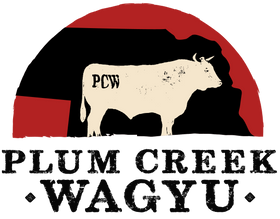Wagyu beef is celebrated worldwide for its extraordinary tenderness, rich flavor, and, most notably, its signature marbling. But what exactly makes this marbling so unique? The answer lies in a fascinating blend of genetics and carefully controlled feeding practices that work together to create this luxurious beef. Let’s delve into the science behind Wagyu marbling to understand what makes it so special.
The Role of Genetics
At the heart of Wagyu beef's incredible marbling is its genetic makeup. Wagyu cattle have been selectively bred for centuries to enhance traits that lead to superior meat quality. A key factor is a gene that influences fat distribution. In most cattle breeds, fat tends to accumulate around the muscles, leading to larger, exterior fat deposits. However, in Wagyu cattle, a specific genetic predisposition causes fat to be deposited within the muscle fibers, creating fine, even marbling throughout the meat.
This intramuscular fat is what gives Wagyu its characteristic melt-in-your-mouth texture. The high percentage of monounsaturated fats in Wagyu is not only responsible for the buttery mouthfeel but also makes the beef healthier compared to other varieties. This genetic advantage is what allows Wagyu to stand out among other premium beef products.
The Importance of Feeding Practices
Genetics alone, however, doesn’t tell the whole story. The way Wagyu cattle are raised and fed is equally important in developing the high marbling for which this beef is known. Wagyu cattle are typically raised on a specialized diet designed to promote slow growth and steady fat accumulation. This diet often includes high-energy grains like corn and barley, which are crucial in developing the fine marbling that defines Wagyu.
Feeding practices are highly controlled and tailored to the individual needs of the cattle. For instance, many Wagyu cattle are given a diet that is adjusted over time, beginning with a higher roughage content and gradually incorporating more grains. This approach helps the cattle develop intramuscular fat gradually and evenly, resulting in the intricate marbling patterns that make Wagyu so visually appealing and delicious.
The Science of Fat Deposition
The process of fat deposition in Wagyu cattle is a finely tuned balance of biology and management. As the cattle consume their specialized diet, the energy from the food is converted into fat, which is stored within the muscle tissues. The rate at which this fat is deposited, and the uniformity of its distribution, are key factors that influence the quality of the marbling.
This fat not only provides flavor but also impacts the texture of the meat. During cooking, the fat melts at a low temperature, creating a rich, juicy consistency that enhances the overall eating experience. The unique fatty acid composition of Wagyu, which includes a higher ratio of unsaturated fats, also contributes to its characteristic flavor profile—rich, yet clean, with a lingering umami finish.
Sustainable Practices and Quality Control
The controlled feeding practices used in Wagyu production are designed not only to maximize marbling but also to ensure ethical and sustainable farming. Many Wagyu farms prioritize the well-being of the cattle, providing them with stress-free environments and adhering to strict guidelines on diet and care. This careful attention to detail ensures that the marbling develops naturally, without the need for artificial enhancements, maintaining the integrity of the beef.
The science behind Wagyu marbling is a perfect blend of nature and nurture. The genetic predisposition of Wagyu cattle, combined with meticulous feeding practices, creates a beef product that is unparalleled in quality. Whether you're enjoying a Wagyu steak or a delicate slice of sashimi, you're experiencing the result of centuries of careful breeding and an advanced understanding of cattle nutrition. Wagyu marbling isn't just a visual treat—it's a testament to the art and science of producing the finest beef in the world.
Related Posts
Beyond the Steak: Creative Wagyu Recipes for Every Occasion
Take your Wagyu beyond the steak! From juicy burgers to slow-cooked short ribs and mouthwatering tacos, explore creative Wagyu recipes perfect for any occasion.
Mastering the Perfect Wagyu Steak: Cooking Techniques for Every Cut
Master the art of cooking Wagyu steak with expert techniques for grilling, pan-searing, and sous vide. Discover the best methods to bring out the rich marbling and unmatched flavor of every cut.
Pairing Wagyu with Whiskey, Wine, and Cocktails: The Best Drinks to Complement Wagyu Beef
Discover the best drink pairings for Wagyu beef! From rich whiskeys and bold wines to complex cocktails, find out how to complement the rich flavors of Wagyu with the perfect beverage!
Wagyu Myths Debunked: Separating Fact from Fiction
Wagyu beef is often surrounded by myths, from misconceptions about its price to confusion about its fat content. In this post, we debunk the most common myths about Wagyu beef, providing the facts that every meat lover should know.
Wagyu and the Farm-to-Table Movement: How Local Sourcing and Sustainable Ranching Impact Wagyu Quality
Explore how the farm-to-table movement is enhancing the quality of Wagyu beef through local sourcing and sustainable ranching practices. Learn how these practices contribute to better flavor, ethical production, and a positive environmental impact.








